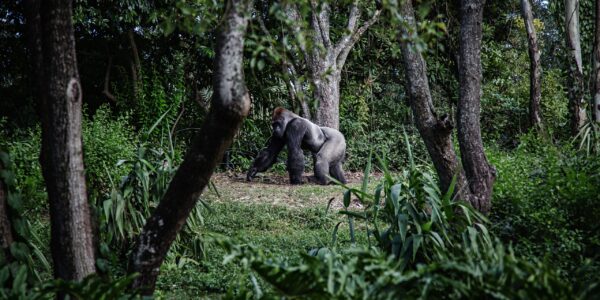Research into the human skin microbiome is a fascinating field of research. How will multi-omics approaches change the way we develop new cosmetic products? BaseClear’s Dr Radhika Bongoni, Head of Business Development, and Dr Savanne Holster, Product Manager Skin Health, held an interview with Dr Riccardo Sfriso, R&D Scientist Personal Care at DSM Nutritional Products, about current directions in human skin research.
DSM is a global company with activities grouped into Life Sciences, Nutrition and Personal Care, Materials, and Innovation. Their Personal Care range includes UV filters, skin bio-actives, vitamins, polymers, scents, and emulsifiers for a wide range of applications. DSM has been actively researching the role of the skin microbiome in skin health. Their website www.secretlifeofskin.com provides information and inspiration about the skin microbiome.
As a life science company, there is a natural fit between DSM’s activities and the microbial genomics expertise provided by BaseClear. In addition to state-of-the-art microbiome analyses for various projects within DSM, BaseClear collaborates with DSM scientists to advance the field of sequencing technologies and microbiome research1.
Tell us a little about the latest research directions in the skin microbiome
RS: Researchers are interested at the effects of stress on the skin and gut microbiome as the brain-gut-skin axis is a hot topic right now. This is very important now in the corona time! We have all had to deal with many changes due to the pandemic, and that has its effect on our overall health and our skin. Other stresses such as work or a busy family life can affect skin’s appearance and the skin microbiome. The interaction between all these factors are crucial in determining skin health.
RB: The microbiome in skin care is a clear trend. It goes beyond anti-wrinkle treatments now: people find it important to use products that don’t disturb the skin’s natural balance. Consumers are starting to see that the skin is an ecosystem that they have to work with to look their best. Researchers are also looking into the skin virome – the viruses that live in and on the skin. Most of the research up until now has focused on bacteria and fungi, and the effect of viruses is still poorly understood. Bacteriophages, for instance, are viruses that are very specific in their mode of action as they “kill” bacteria. Currently, bacteriophages and endolysins produced by them are on the market to treat skin conditions such as acne and atopic dermatitis. However this area is yet to be fully explored, and further safety and toxicity assessments are warranted.
What are the main trends you see at the moment regarding genomic techniques for measuring the skin microbiome?
RS: We see many studies nowadays using 16S rRNA sequencing and other culture-independent techniques. We also see multi-omics approaches increasing as scientists try to make sense of the complex environment in the skin by combing metagenomics, metabolomics, proteomics and other data-driven biological measurement approaches. Artificial Intelligence and machine learning techniques will definitely be needed to integrate these technologies. We are trying to move from correlation to causation. More clarity will come from using these multi-omics approaches compared to using a single technique.
RB: The concept and importance of skin microbiome analysis is relatively new to the cosmetic industry. Dermatology or pharma-based skin care products are familiar to the skin microbiome, but more specific to a ‘bad’ microbiome. In that sense, pioneers in the industry like DSM Personal Care have already implemented microbial profiling to study the interaction between cosmetic formulations and ingredients with the skin microbiome. Following the steps of DSM as the ‘trend-setter’ for science-based products, many companies are now catching up with microbial profiling analysis for their products. But we also see that companies like DSM have advanced even further with the use of genomic technologies to develop skin care products.
What techniques are important for future microbiome analyses in the skin?
SH: 16S rRNA sequencing is used very often, which is useful for bacteria. However not only the bacterial microbiome is important but other kingdoms including yeast, fungi, archaea, and viruses. Shotgun sequencing is a better approach as several kingdoms can be analysed together, giving a more complete picture of the entire ecosystem2.
qPCR is of great value to address the skin microbiome even though fewer species can be targeted. This technique allows a more quantitative approach, and the application of more robust statistical methods to the analysis. Challenges include developing specific primers for closely-related strains3.
SH: Pioneers like DSM have looked into the microbiome for several years and have a good understanding of how to best answer their research questions. Customers who are just starting out researching the skin microbiome do not always use the more sophisticated approaches. They should look for advice from experienced PhD-level molecular biologists, microbiome specialists and bioinformatics experts when designing their study to get the best results possible.
RS: The use of biological modelling, including in vitro skin models, is becoming more important. Biological models will be important in the future for detecting and studying changes in microbial composition. Nowadays, we see standardized biological models that can be colonized with commensal bacteria in order to better mimic the in vivo situation allowing to study the effect of specific compounds. Of course, in vivo data are eventually needed to supplement the models and substantiate claims. Due to the complexity of the skin microbiome, we need a combination of in vivo, in vitro and multi-omics techniques to fully understand what is going on. It’s also very important to collect meta-data, such as the age and health condition of subjects from whom the sample has been collected, and apply machine learning or artificial intelligence to use the large amount of data to its full potential.
What are some challenges in microbiome analyses today?
RS: Data analysis is currently a major challenge in skin microbiome research. Next generation sequencing techniques such as 16SrRNA sequencing generate large, complex datasets. A solid bioinformatics approach is needed to analyses the datasets productively. We also need to ensure that information about subject age and other characteristics are added. We are at the stage where we can actually predict subject characteristics from skin microbiome analysis. Due to the high inter-personal variability in skin microbiota composition, recording metadata associated with each individual subject is important.
SH: One challenge specifically on the skin is that New Generation Sequencing (NGS) techniques don’t distinguish between live and dead bacteria. This is important information for distinguishing between transient and resident (core) microbes. We also need dedicated databases that include a large range of skin microbiomes. 16S results can identify a core microbiome that can be used for shotgun sequencing, which can be helpful. Functional analysis can be done based on shotgun sequencing but low biomass is a challenge. On top of that, there is a lot of host DNA present from taping or biopsies that needs to be filtered out. This makes it more of a challenge to work with the data from skin.
RS: After the core skin microbes have been found, it’s hard to find low-abundance microbes that are present on everyone. Researchers need to identify key species or, even better, strains that are changing the most within the core microbiome as a consequence of a skin disorder, treatment or cosmetic product application. When dealing with relative abundance data, log-ratio transformation allows for compositional data to be transformed into real Euclidean space, which then allows statistical tests to be applied.
In terms of sampling challenges, swabbing does not allow the collection of bacteria from in pores or sebaceous glands, yet the bacteria here act as a reservoir and are likely to affect skin parameters. We definitely need to improve sampling techniques to sample deeper into the skin yet avoid overly invasive techniques.
SH: the transient bacteria reside in the follicles and can revive to ‘normal’ diversity in couple of hours. Swabbing indeed doesn’t pick up these microbes, however is the best method with least amount of host DNA in samples. Swabbing instructions should be standardised and consistent between sampling timepoints4.
How quickly can substantial shifts in the microbiome be seen after the use of a cosmetic product on the skin?
RS: We recently performed a rinse-off clinical study and have observed at 1 hour that the microbial load decreased after skin cleansing. There was not only a decrease in the number of bacteria, but also a shift in microbial composition, which was dependent on the cosmetic cleansing product used. Some bacteria stick to the skin better therefore they are more likely to survive any type of skin treatment. Our research has shown that certain bacteria can be supported by the presence of a specific ingredient in the product, a sugar that could be selectively able to be metabolized by certain microbes.
We also looked at how quickly the skin microbiome returned to its normal balance after washing, and whether we could influence the skin microbiome with our cleansing product5. In our study, we looked at changes in the microbiome measured by 16S rRNA sequencing at 1h, 6h, 24h and 7 days after the use of a cleansing product containing saccharide isomerate. There was a clear change found at 1h after the treatment, but samples taken at 6h showed that the microbiome was reverting back to the baseline balance. Saccharide isomerate appeared to selectively enhance the population of a potentially beneficial microbe and reduce the proportion of two potential pathogens. So we could show that the cleansing product could modulate the skin microbiome in a way that could be beneficial to skin health.
REFERENCES
1 Costessi A, van den Bogert B, May A, Ver Loren van Themaat E, Roubos JA, Kolkman MAB, Butler D, Pirovano W. Novel sequencing technologies to support industrial biotechnology. FEMS Microbiol Lett. 2018 Aug 1;365(16). doi: 10.1093/femsle/fny103. https://pubmed.ncbi.nlm.nih.gov/30010862/
2 BaseClear Whitepaper: Species-level community profiling and functional analysis for human microbiome research. https://www.baseclear.com/blog/human-microbiome/whitepaper-species-level-community-profiling-and-functional-analysis/
3 BaseClear Scalp Microbiome Analysis. https://www.baseclear.com/human-microbiome-research/scalp-microbiome-analysis/
4 BaseClear and CHDR partner in clinical trials: from sampling and scientific advice to a final study design. https://www.baseclear.com/blog/microbiome/baseclear-and-chdr-partner-in-clinical-trials-from-sampling-and-scientific-advice-to-a-final-study-design/
5 Sfriso R, Claypool J. Microbial Reference Frames Reveal Distinct Shifts in the Skin Microbiota after Cleansing. Microorganisms. 2020;8(11):1634. Published 2020 Oct 23. doi:10.3390/microorganisms8111634 https://www.ncbi.nlm.nih.gov/pmc/articles/PMC7690701/
Related items





